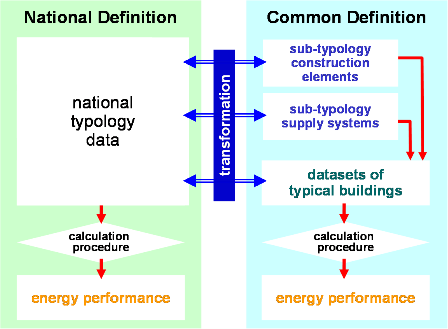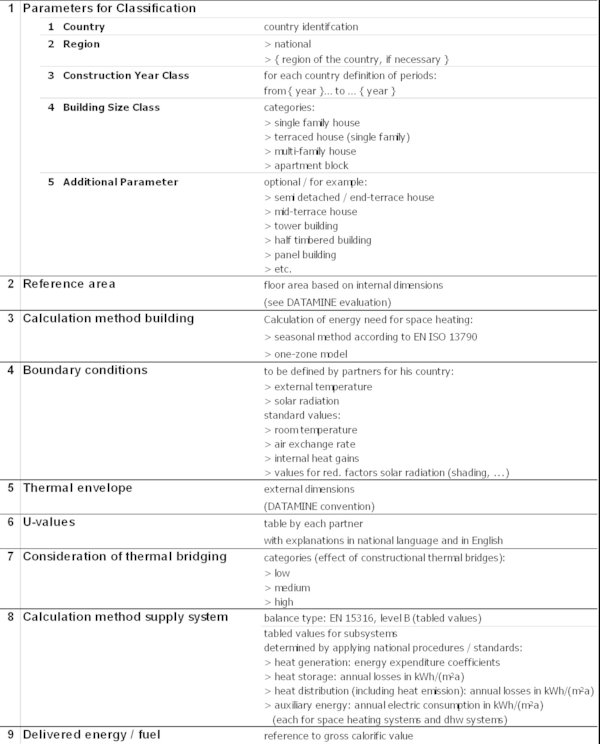- >
- Building Typology>
- TABULA Typology Structure>
- Concept
TABULA Typology Structure - Concept
A Two-Track Approach
TABULA follows a two-track approach for the definition of a national Building Typology:
[A] National Definition
The National Building Typology of a country is designed according to the needs of the national experts in the different application fields. They can use typological information for defining showcase examples, for assessing distinct buildings and for modelling the energy performance of the national building stock (see Objectives and Target Groups). For these purposes the Building Typology must be defined in accordance with national regulations and by use of the native language of a country.
[B] Common Definition
In order to exchange information between countries uniform definitions are necessary. Therefore the TABULA consortium has agreed on a number of settings concerning the classification systematics, the data structure and the energy balance calculation to be applied to all National Building Typologies.
Both definitions of a National Building Typology are describing the same physical properties. They are only two sides of the same coin. All TABULA partners are responsible for the consistent transformation between their national and the common definition.

Common Definition: The TABULA Data Structure
Statistical Data
One of the benefits of building typologies is to provide a basis for the analysis of the national build-ing stocks, e.g. for energy balance and scenario calculations. In order to fulfil this task the building typology has to be accompanied by statistical data describing the frequency of building and heating system types and the refurbishment states. In order to make cross-country comparisons possible the TABULA consortium agreed on the following systematics for assembling and displaying statistical data:
| Statistical Table | Item |
|---|---|
| S-1.1 | Frequency of building types of the national building stock |
| S-1.2 | State of envelope refurbishment |
| S-2.1 | Centralisation of the heat supply (for space heating) |
| S-2.2 | Heat distribution and storage of space heating systems |
| S-2.3 | Heat generation of space heating systems |
| S-2.4 | Heat distribution and storage of domestic hot water systems |
| S-2.5 | Heat generation of domestic hot water systems |
| S-2.6 | Solar thermal systems |
| S-2.7 | Ventilation systems |
| S-2.8 | Air-conditioning systems |
| S-2.9 | Control of central heating systems |
| S-2.10 | Correlation of envelope and heat supply modernisations |















